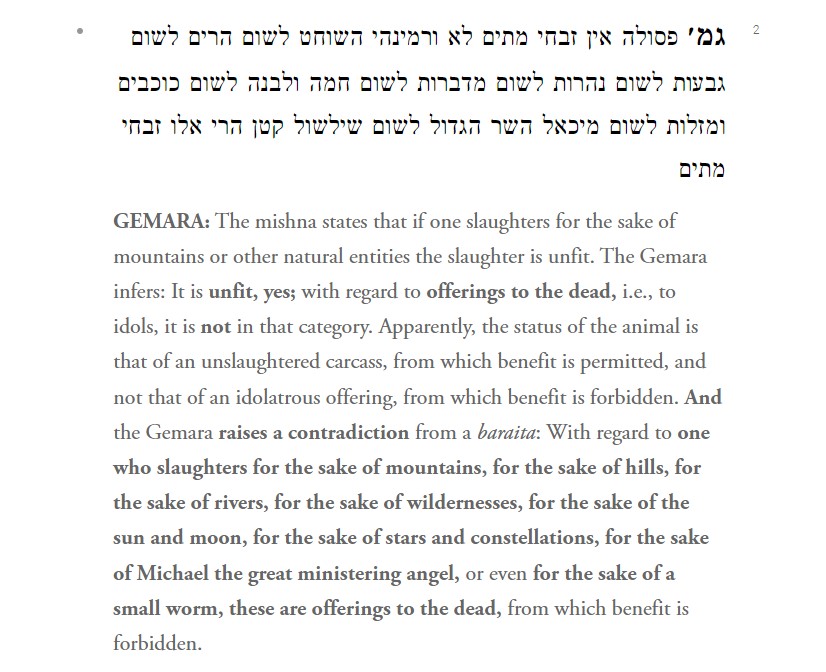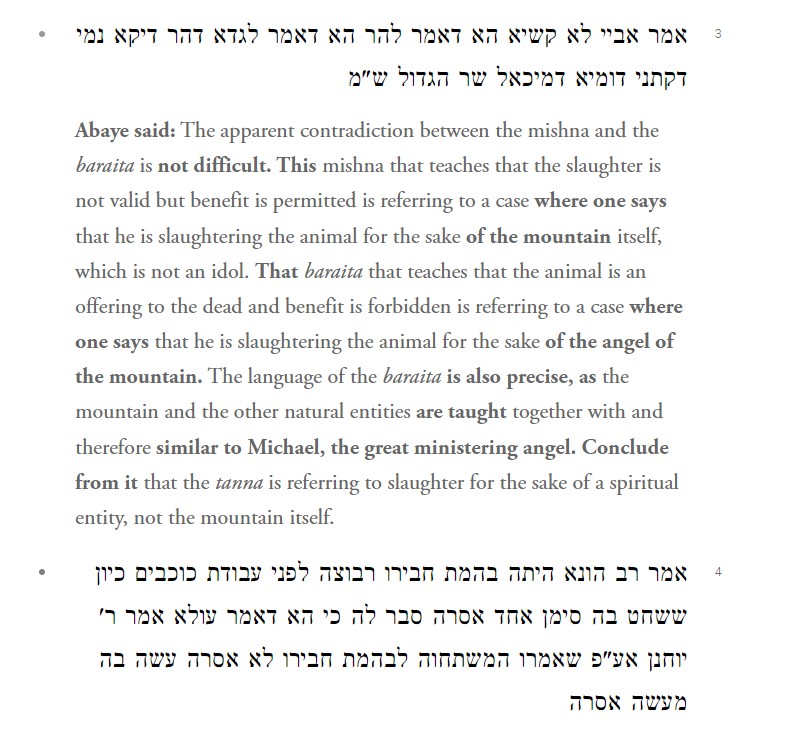Babylonian Talmud prohibits sacrifice being offered to Michael and other angels.
- Type
- Book
- Source
- Sefaria Non-LDS
- Hearsay
- DirectTranslation
- Reference
Tractate Chullin 40:2-3, Babylonian Talmud, Sefaria, accessed November 25, 2022
- Scribe/Publisher
- Sefaria
- People
- Sefaria, Michael
- Audience
- Reading Public
- Transcription
גמ׳ פסולה אין זבחי מתים לא ורמינהי השוחט לשום הרים לשום גבעות לשום נהרות לשום מדברות לשום חמה ולבנה לשום כוכבים ומזלות לשום מיכאל השר הגדול לשום שילשול קטן הרי אלו זבחי מתים
GEMARA: The mishna states that if one slaughters for the sake of mountains or other natural entities the slaughter is unfit. The Gemara infers: It is unfit, yes; with regard to offerings to the dead, i.e., to idols, it is not in that category. Apparently, the status of the animal is that of an unslaughtered carcass, from which benefit is permitted, and not that of an idolatrous offering, from which benefit is forbidden. And the Gemara raises a contradiction from a baraita: With regard to one who slaughters for the sake of mountains, for the sake of hills, for the sake of rivers, for the sake of wildernesses, for the sake of the sun and moon, for the sake of stars and constellations, for the sake of Michael the great ministering angel, or even for the sake of a small worm, these are offerings to the dead, from which benefit is forbidden.
אמר אביי לא קשיא הא דאמר להר הא דאמר לגדא דהר דיקא נמי דקתני דומיא דמיכאל שר הגדול ש"מ
Abaye said: The apparent contradiction between the mishna and the baraita is not difficult. This mishna that teaches that the slaughter is not valid but benefit is permitted is referring to a case where one says that he is slaughtering the animal for the sake of the mountain itself, which is not an idol. That baraita that teaches that the animal is an offering to the dead and benefit is forbidden is referring to a case where one says that he is slaughtering the animal for the sake of the angel of the mountain. The language of the baraita is also precise, as the mountain and the other natural entities are taught together with and therefore similar to Michael, the great ministering angel. Conclude from it that the tanna is referring to slaughter for the sake of a spiritual entity, not the mountain itself.
- Citations in Mormonr Qnas
The B. H. Roberts Foundation is not owned by, operated by, or affiliated with the Church of Jesus Christ of Latter-day Saints.


